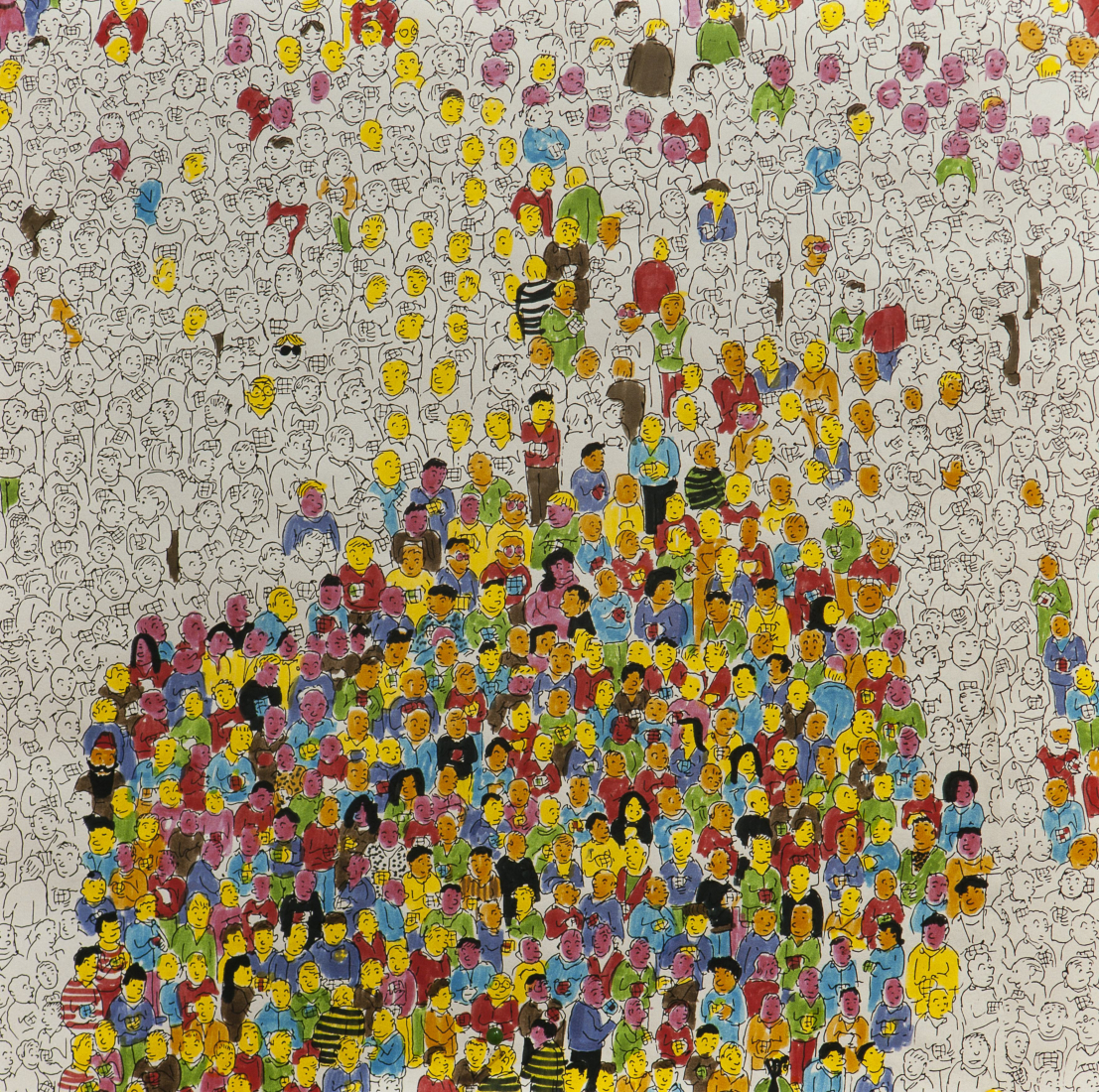Francesc Ruiz and Erno Rubik
Francesc Ruiz approaches the world of games from the perspective of the chronicler of the epic of one of the most suggestive mass phenomena in contemporary history. The Rubik Cube put the productive model of Communist Hungary into crisis, as it showed itself incapable of absorbing a global demand. Even so, the invention provoked hysteria for its use and consumption and the appearance of a whole type of literature devoted to find out the solutions. With Francesc Ruiz and Erno Rubik, we entered into a universe of drawn complexity. Like in the intricate and hidden combinations of Rubik's game, a great panoramic drawing that occupies the three walls of the room develops, in parallel with the complexity of the cube, a labyrinthine proposal, in the manner of the games of densely crowded (and hidden) images of Where's Wally ?. In this frame, the visitor plunges into the tangle of characters who, cube in hand, accumulate the length of the square metres of drawing. Strains to look, comes closer, seeks, retreats, looks. But this time the game has no solution. A game (the cube) commented upon from the formal frame of another game (Wally). On this hyper-drawn black and white structure, Ruiz painted with markers zones of characters that are sometimes identified among themselves as urban tribes, or strange and arbitrary sects, or dumbfounded hermits, forming masses of colours that shape a new and random image. Thus, the surface of the drawing gains in density as we allow ourselves to be taken by the proposal and we discover that underneath the appearance of an enigmatic game, Ruiz tells us that art is a secret cartography, a place of the accumulation of infinite layers or a mutant space that transforms itself as the look slowly penetrates its thickness.
Luisa Ortínez






